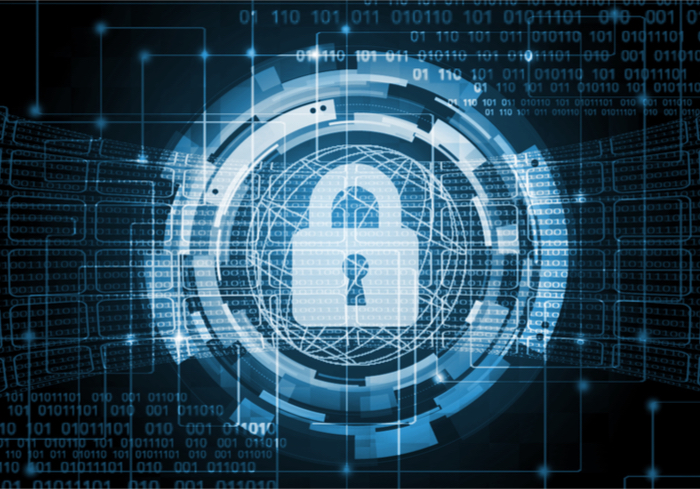It used to be about the bars and bulletproof screens that separated tellers from banking customers and set a tone of security and trust. But that’s changing in the digital era.
No one needs to be told how banking has evolved or how smartphones and other digital channels have transformed funds management. Trust, though, remains a bedrock principle of any successful financial system, no matter what technology is involved. That was the subject of a recent discussion Ray Wizbowski, chief marketing officer for Entrust Datacard, had with Karen Webster for PYMNTS’ “Economy of Trust” interview series.
Bank branches once stood almost as fortresses of trust, the solid structures even giving customers a glimpse of the imposing vault in the back.
“I think it’s evolving,” Wizbowski said. Branches are “removing glass, moving money out of the bank in general and making more of a point of connecting with a person who has a problem that they need to address.”
The underlying trend when it comes to trust, however, is that banks are at risk of losing control. As the physical gives way to the digital, tellers not only lose the personal connection with customers, but financial institutions find themselves further and further from the physical customer, and at risk of identity thieves and criminals who create fictitious accounts. It’s up to banks — and banks alone, Wizbowski said — to invest in the technology that can prove the customer on the other end of a transaction is, in fact, who they say they are.
Don’t expect governments to keep banks totally safe as the technology changes.
Advertisement: Scroll to Continue
“Regulation will never keep up with the fraud that is out there, but it is moving in the right direction,” Wizbowski said. That leaves financial institutions with the main responsibility “to focus on the identity of the consumer,” he said. “In our dialogue with banking customers, (we ask) how are you ensuring that the identity remains with the customers you opened the account with?”
That work increasingly relies on machine learning and artificial intelligence. Technology now allows online banking applications to remember when customers typically log into their banking apps or use ATMs, and from where. That essentially sets a baseline of trust. When that activity veers outside “the norms,” he said, then the bank should request more data from the user to make sure the account holder is legitimate.
“The intelligence is being built in platforms (to provide) a foundation for how consumers are going to interact with information in the future,” Wizbowski said. That intelligence can easily be applied to banking. “If you are at a trade show in Vegas and try to withdraw $10,000, I want to know it’s you trying to take out” that money, he noted.
As financial transactions become ever more digital, and apps and ATMs smarter and more secure, bank branches will not fade in importance, but will gain a new role in winning over customer trust and loyalty.
“Bank branches are the preferred place where people go to resolve an issue,” Wizbowski told Webster. “If I get online and something does not go right, I need to go talk to a person.” The question for banks, he added, is “How do I make that better?”
One answer? In place of those old-fashioned teller protection devices, financial institutions can install geolocation technology to identify customers as they walk into those branches, among other features that promote “frictionless” interactions. In fact, that concept represents a vital part of Entrust Datacard’s “Taking the ‘F’ Out of Authentication” marketing campaign — that is, taking the friction, frustration and factors out of the interactions a consumer has with a bank.
A geolocation system can save time and hassle for both the teller and customer, making a branch visit that stemmed from a problem into something that ends with a positive feeling.
“By the time I get to the teller, up pops my information so I do not have to go through a long process of identifying myself,” Wizbowski said.
In fact, reimaging branches for the digital world has emerged as a trend in banking.
For instance, JPMorgan Chase recently announced that it plans to open up 70 new branches in the Washington, D.C. area and expand its branch network into 15 to 20 new U.S. markets. Chase intends to build some of those branches as “smaller, digital-first locations,” the bank said in a press release, a reflection of “how customers choose to bank.”
Chase’s building boom drives home Wizbowski’s point about how branches can strengthen banks’ credibility, even as mobile absorbs more financial activities.
“You are really seeing a turn into branches becoming a smaller footprint, but more interactive,” he said. “We will always continue to evolve in technology to make the experience better for customers.”
Banks, he said, can strain customers’ trust only so far. Consumers who learn about data breaches at their own banks will likely keep doing business there if a breach has no direct impact on their accounts, he said. “But if they see inappropriate activity, it’s a lot harder” for financial institutions to keep that business.
And that, he said, brings it all back to identity.
“If you do not start with a secure identity, if the identification itself can be compromised, that’s where the No. 1 problem” comes from, he said.




